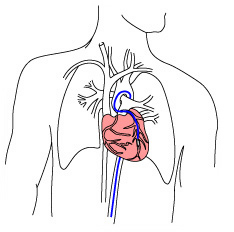Coronary Artery Diseas
Atherosclerosis of the coronary arteries is the most prevalent of cardiovascular diseases and the principal cause of death in the industrialized world. While many patients may have the same diagnosis of atherosclerosis of the coronary arteries, there are important differences between patients. Recent research shows that the greatest risk for mortality from coronary artery disease does not come from calcified and closed arteries, but open arteries where soft plaque has ruptured and blocked the smaller downstream vessels. The research suggests that coronary artery disease is a systemic disease affecting the entire coronary vasculature.
Systemic approaches to cardiovascular disease include the prescription of pressure reducing, cholesterol lowering, and anti-clotting medicines. Patients have varying responses to medicines. For any given treatment, significant percentages of people are non-responsive and will suffer increased morbidity and mortality as a result. In addition, a significant number of patients are given the wrong or insufficient medication resulting in adverse consequences for the patient and higher costs. If physicians who make treatment decisions for their coronary artery disease patients know the histological profile of the patient’s vasculature, along with the DNA, RNA, lipid, protein, and receptor profiles for the patient’s diseased coronary arteries, they can make better treatment decisions. Better treatment decisions mean improved patient outcomes and more efficient use of medical resources.

The endoarterial biopsy catheter would improve the medical care of coronary artery disease patients by providing the means to differentiate patients through the analysis of biological markers of inflammation, infection, cholesterol build-up, plaque rupture potential, or other proteins characteristic of coronary artery disease in endoarterial biopsy samples. With this knowledge, physicians could custom-tailor the intervention to each patient’s coronary arterial characteristics resulting in improved clinical outcomes.
Coronary artery disease patients who have undergone multiple bypass and re-bypass procedures and are facing the prospect of a second or a third coronary artery bypass with a limited supply of donor vessels could also benefit from the endoarterial biopsy catheter. The catheter could be used to obtain a sample of a patient’s arterial cells for the culture of autologous vascular grafts. Researchers have performed experiments in which autologous arterial cells have been grown in a cell culture, and then re-implanted in patients. The endoarterial biopsy catheter can obtain arterial cells in a minimally invasive fashion for seeding on bioabsorbable tubular polymer scaffolding for cell culture followed by reinsertion into the patient. These autologous arterial conduits would be composed of a patient’s own tissue, thus avoiding the immunological problems associated with synthetic and foreign vascular grafts.
WARNING: Investigational Device. Limited by Federal law to investigational use. This device should be used only by physicians with a thorough understanding of percutaneous interventional procedures and training in the use of the endoarterial biopsy catheter.
DISCLAIMER: The material provided on this site is strictly for informational purposes. Do not use this site as a substitute for medical care or medical advice. Please consult with your physician or other medical care provider regarding any medical questions you may have.

